Books by Judyta Pudełko
Studia Biblica Lublinensia 21, Lublin: Wydawnictwo KUL 2020, ISBN 978-83-8061-854-1, pages 426, 2020
Articles by Judyta Pudełko
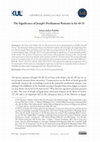
The Biblical Annals, 2024
The Praise of the Ancestors (Sir 44 – 49) is a presentation of the most outstanding heroes of bi... more The Praise of the Ancestors (Sir 44 – 49) is a presentation of the most outstanding heroes of biblical Israel's history. The final poem of this praise shatters the historical sequence by returning to the beginning of history. Henoch, Joseph, Shem, Seth (Enos in H) and Adam are mentioned in Sir 49:14-16. The article focuses on presenting the figure of Joseph (49:15) and understanding the significance of the mention of his posthumous remains. The question of the presence and location of this important character in the context of the entire praise and in connection with the other characters of 49:14-16 is first raised. The content of Joseph's praise in its textual versions (G, H, S) is then analysed, and an attempt is made to interpret the differences present in them. Both the 'bones' (49:15G) and the 'flesh' (49:15H/S) of the patriarch Joseph play an important role in the presentation of this character, indicating his importance in the history of posterity, both in relation to the biblical tradition and comparing Joseph with Alexander the Great.
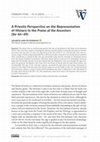
Verbum Vitae, 2023
The article aims to synthetically present the idea of priesthood in the Praise of the Ancestors (... more The article aims to synthetically present the idea of priesthood in the Praise of the Ancestors (Sir 44-49), a text that contains a theological reflection and description of selected characters in the biblical story from the point of view of a sage living at the turn of the 3 rd-2 nd centuries BC. First, the successive stages of history depicted by Ben Sira and their possible connections to priesthood are outlined. Then, priesthood as viewed by Ben Sira was presented using specific examples of individuals known from the history of biblical Israel (Aaron, Phinehas, David, Samuel, Joshua son of Jehozadak). However, kings from the Davidic dynasty no longer reigned after the Babylonian exile, even though the sage compares the governor Zerubbabel, who came from the House of David, with the high priest Joshua, son of Jehozadak. The sign of the covenant, however, remained the high priest. Anonymous references to women in the Praise of the Ancestors also feature references to the reality of the cult. Closing the Praise of the Ancestors, Adam is a type of priest that foreshadows the story's culmination in the description of the high priest Simon II (Sir 50:1-21). The priesthood in Ben Sira's view is the keystone that connects the past to the present.

Warszawskie Studia Teologiczne , 2022
The historical-literary analysis of the Book of Isaiah suggests that Isaiah 61 is the oldest chap... more The historical-literary analysis of the Book of Isaiah suggests that Isaiah 61 is the oldest chapter of the last part of the Book of Isaiah, known as Trito-Isaiah (56-66). There are messages from the Babylonian exile that portray the post-exile Jewish community. There is disappointment and at the same time anticipation of the realization of earlier prophecies of restoration. In Isa 61: 1-3 there is a confession of a mysterious figure sent by God. The hero, anointed with the Spirit of the Lord, heralds
a radical renewal of Israel. The exegetical analysis of the prophet’s individual tasks allows him to be identified with various heroes of the biblical story (David, the Messiah, the Servant of the Lord). At the same time, these activities were most often attributed to God Himself. The eschatological renewal of Israel, which God will accomplish, will also extend to other nations.
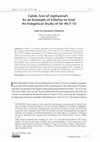
Biblical Annals, 2021
Caleb is a secondary character in several episodes of the Exodus as well as the conquest of the P... more Caleb is a secondary character in several episodes of the Exodus as well as the conquest of the Promised Land (Num 13-14; Josh 14:6-14). Praise of the Ancestors (Sir 44-49) contains a presentation of the biblical history of ancient Israel as the history of the covenant and a place of God's intervention. According to his own criteria, Sirach presents the most relevant and positive characters in this history. In Sirach's description (46:7-10), Caleb is a faithful scout, who, together with Joshua, faced with the rebellion of the Israelites, bears witness to an exemplary trust in God and encourages the Israelites to follow his lead. His courage and faithfulness are rewarded by receiving an inheritance of some ground in the Promised Land, which then becomes the property of his offspring. In the brief account of Sirach, Caleb is a timeless example of a faithful man-one who lives according to the word of God and encourages others to take up this challenge.

Verbum Vitae 35 (2019) 37-74, 2019
The article aims to present the perspective on successive periods of Biblical Israel, covered by ... more The article aims to present the perspective on successive periods of Biblical Israel, covered by the Praise of the Ancestors (Sir 44 - 49) in the Book of Sirach. The writer begins with determining the context and borders of the analyzed text. Then she presents briefly the general introduction to the Praise of the Ancestors (Sir 44 - 49). The next parts of the article offer a proposition for periodization, consisting of three parts: the covenant period (Sir 44:16 – 45:26), the prophets’ and kings’ period (Sir 46:1 – 49:10), and finally the renewal period (Sir 49:11-16). The entire text is completed with an appendix, which concerns the fulfillment of the previous historical periods in the person of Simon II, the high priest of Jerusalem Temple (Sir 50:1-24). Periodization of history in the Praise of the Ancestors, besides providing chronology, is a presentation that might be described as theological, canonical and sacerdotal approach.
Biblical Annals 9/2 (2019) 269-284, 2019
Biblical books, while presenting events from the history of biblical Israel, interpret them in a ... more Biblical books, while presenting events from the history of biblical Israel, interpret them in a theological manner. This principle also applies to the description of Sennacherib's military campaign against Judah and Jerusalem in 701 BC. This campaign is even reported in the Assyrian sources, which underline Assyrian military power. The biblical narrative emphasizes an extraordinary intervention of God, who saves his people in a mysterious way.

Warszawskie Studia Teologiczne 31/1 (2018) 94-106, 2018
To be a scribe and a sage was an ideal for men of Israel who desired to approach God and particip... more To be a scribe and a sage was an ideal for men of Israel who desired to approach God and participate in his wisdom. Was it possible for everybody? The article presents, in a synthetic way, the identity of the sage as described in the Book of Sirach. The calling of the sage implies a long and hard process of formation and growth, which continues until the end of his life. This calling, while requiring preparation and effort, must not be reduced to one of many - perhaps a bit more prestigious - professions and jobs. In his Book, Sirach shares with the reader his personal experience of acquiring wisdom and “becoming” a sage. He points at hard beginnings, at enjoyment of the fruit of his efforts, and finally at the necessity for sharing his acquired and received wisdom. It is only after the sage shares his wisdom with his disciples that he achieves the fullness of his identity. He then becomes a spiritual father of his disciples, sharing his wisdom as well as his own life and experience of God.
Warszawskie Studia Teologiczne 30 (2017) 120-132, 2017
The Book of Proverbs presents four texts where the tree of life metaphor appears: 3:18; 11:30; 13... more The Book of Proverbs presents four texts where the tree of life metaphor appears: 3:18; 11:30; 13:12; 15:4. They obviously allude to the heavenly tree, which – according to the description in Genesis – stood in the middle of the Garden of Eden. The motif is also present in tales and beliefs of ancient Near East cultures (Mesopotamia, Egypt, Canaan), which somehow affected its biblical use. The presence of this metaphor in the Book of Proverbs indicates that regaining life that had been lost in the Garden of Eden was identified with gaining the divine gift of wisdom. The tree of life, i.e. a gift of a blessed life, means following the paths of wisdom in all its aspects: speech, desires, acts, and relationships.
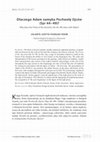
Biblical Annals 7/4 (2017) 441-457, 2017
The Book of Sirach contains, besides numerous sapiential maxims, a remarkable text focused on the... more The Book of Sirach contains, besides numerous sapiential maxims, a remarkable text focused on the work of God and His wisdom in the history of Israel: The Praise of the Ancestors (Sir 44-49). In this way, a sage of Jerusalem wanted to instill in the hearts of his disciples the ability to view history in the theological way. The order and interpretation of the heroes presented in the passage, while based on tradition, results from interpretation and criteria of the author himself. Interestingly, at the end of the description the sage returns to the beginnings not only of Israel but also of mankind by closing his description with the figure of Adam-the first man. The presentation of Adam in Sir 49,16b is very positive, the author focuses on the glory and beauty of the first man, with complete disregard for such aspect as his fall. The terminology employed connects the figure of Adam with priestly personages described by Sirach (Aaron; Simon, the high priest), which suggests a special significance of the high priest in the work of the sage of Jerusalem. The reference to Adam and the beginning of mankind presumes the recognition of "the new beginning" in the figure of the high priest.
Biblica et Patristica Thorunensia 10/2 (2017) 263-283
The Praise of the Ancestors (Sir 44 - 49) includes the presentation of the history of biblical Is... more The Praise of the Ancestors (Sir 44 - 49) includes the presentation of the history of biblical Israel as an exemplification of God’s working in history. The sage presents the most important and positive heroes of this history according to his own criteria. David, described in Sir 47:1-11, is one of the most important Old Testament heroes. His activity as a king is presented by Sirach first of all as that of an initiator of the Jerusalem cult (Sir 47:8-10). The sage employed the “cultic” image of David, present in Chronicles 1. The image of David is also integrated with the idea of history and covenant characteristic of the Praise of the Ancestors. David becomes a forerunner of the high priest Simon, who was, in the times of Sirach, a sole sign of the covenant as well as the mediator between God and his people.

Warszawskie Studia Teologiczne 29/1 (2016) 66-81.
The Praise of Ancestors (Sir 44 - 49) presents the theological reflection on the history of Israe... more The Praise of Ancestors (Sir 44 - 49) presents the theological reflection on the history of Israel, where God revealed his mercy. Even in his general presentation of the heroes, Sirach referred to them as “merciful men” (44:10) i.e. faithful and loyal towards God, those who may act as role models for future generations. Moses, who experienced mercy of God and people himself and then became a sign of mercy of God, who delivered his people and entrusted them with the Law, is called “a merciful man” by the sage. Joshua is presented as the one who “did mercy” (46:7). His radical trust in God and his steadfastness contributed to the end of rebellion among Israelites. In the end, Sirach refers directly to God who “will never abandon his mercy” (47:22). Despite the sins that caused the division of the kingdom, God ensured the survival or the earlier made covenant, which expressed itself in its continuation with the descendants of unfaithful Israel. The composition of the Praise of Ancestors suggests that God’s mercy manifested itself in the strengthening of the covenant between God and the High Priest, who was, in the times of Sirach, the most important sign of God’s faithfulness towards his people.
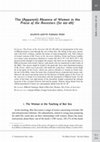
The Biblical Annals 6 (2016) 107-126.
The Praise of the Ancestors (Sir 44–49) offers an interpretation of the story of Biblical Israel ... more The Praise of the Ancestors (Sir 44–49) offers an interpretation of the story of Biblical Israel as seen through the eyes of Ben Sira. His telling of this story, permeated with God’s working, contains the names of male protagonists only. Still, the analysis of textual versions of the Praise of the Ancestors (Hebrew, Greek, and Syriac) enables us to detect some anonymous allusions to women (Sir 46:13; 47: 6.19; 48:19, 49:7). The present article attempts to investigate the reasons why there are no named references to Biblical heroines from Israel’s history, individuals who are mentioned in other books of the Bible. One answer might be found in the particular focus and educational purpose of the Praise, which was to provide a life model for young boys. Another reason might lie in the genre of the Praise, which was used in reference to women in Greek texts, but not in the Bible, where the name lists of praised heroes contained male names only. However, the most convincing reason for the absence of female names in the Praise of the Ancestors is found in its association with the priesthood of Biblical Israel. For the writer of the book, true high priests of the Jerusalem Temple constituted the ultimate keystone of the covenant between God and his people. Women, being absent from the official priesthood of Israel, are consequently absent from Sir 44–49.

Biblica et Patristica Thoruniensia 9/2 (2016) 87-98, 2016
Księga Syracha jest syntezą pouczeń mędrca, który wpajał swoim uczniom zasady właściwego życia w... more Księga Syracha jest syntezą pouczeń mędrca, który wpajał swoim uczniom zasady właściwego życia w wierności wierze ojców i tradycji. Działalność mę-drca (III-II w. przed Chr.) przypada na czas dynamicznego rozwoju myśli i kultury hel-lenistycznej, która coraz bardziej zakorzeniała się na starożytnym Bliskim Wschodzie. Hellenizm jako całokształt stylu życia stawał się alternatywą dla mniej gorliwych Ży-dów, czemu Syrach gorliwie przeciwdziałał. Mędrzec miał świadomość, iż naród Izraela posiadał wpojoną ideę gościnności i pomocy potrzebującym, jednak w swoich poucze-niach zalecał roztropność w tej dziedzinie. Sytuacja bycia gościem u innych (Syr 29,21-28) wiązała się z upokarzającą częstokroć zależnością ekonomiczną. Przyjmowanie wszystkich przybyszów, w tym również osoby podstępne (Syr 11,29-34) mogła narazić na liczne szkody materialne i moralne gospodarzy. Pouczenia mędrca zwracają uwagę, iż bycie przybyszem, nie oznacza już tego, co wcześniej. Akcent dotyczący płaszczyzny etnicznej został przesunięty na płaszczyznę ekonomiczną, etyczną i ideologiczną/ The Book of Sirach is the synthesis of the sage's teachings, as one who sought to instill in his disciples the rules of a proper way of life, in accordance with the faith and traditions of their fathers. The sage's activity (3rd and 2nd centuries BC) marks a time of dynamic growth of Hellenistic thought and culture, which gradually became more and more prevalent across the Ancient Near East. Hellenism, understood as a way of life, was embraced as an alternative by certain less zealous, less strictly observant Jews, and this met with the strong opposition of Sirach. The sage was aware that the nation of Israel had an inculcated ideal of hospitality and assistance to the needy, yet he recommended sagacity and caution in this realm. Being the guest of someone (Sirach 29:21-28) was often connected with a humiliating economic dependence. To accept all strangers, including devious persons (Sirach 11:29-34), as guests, could expose the hosts to material and moral losses. The sage's advice draws attention to the fact that being a stranger does not mean the same as it once did. Whereas the accent was formerly placed solely on the ethnic dimension, it has now been shifted to the economic, ethical and ideological aspects of life. Słowa kluczowe: teologia biblijna; Księga Syracha; gościnność.

Verbum Vitae 28 (2015) 133-153.
In the Greek version of the Book of Sirach the term marturion (testimony) appears twice. Besides ... more In the Greek version of the Book of Sirach the term marturion (testimony) appears twice. Besides Sir 36:14, the word appears also in the Praise of the Ancestors in reference to Aaron (Sir 45:17). Moses' brother is described there as the one who is to teach Jacob the testimonies, an expression that is missing from all other Biblical texts referring to Aaron. Therefore, the context of this expression , i.e. the praise of Aaron in Sir 45:6-22, is first analyzed and then various textual versions of Sir 45:17 are compared. Understanding the meaning of the term testimony in this context is made possible by the analysis of this word in other Biblical contexts, both those connected with the history of Aaron and the Sinai covenant as well as other, unrelated texts. Finally, the expression referring to Aaron is placed within the times of Sirach and those of the translator of the Greek version of the book. The key to understanding Sir 45:17 is found in the function and significance of the post-exile high priest. He is – as understood in the Book of Sirach – the only mediator between God and his people, and thus becomes the living symbol of covenant, responsible for transmitting testimonies: the Word of God, the content and requirements implied by the covenant made with God.

Biblica et Patristica Thorunensia 8 (2015) 67-80.
The Book of the Son of Sirach contains a number of admonitions concerning everyday life and inter... more The Book of the Son of Sirach contains a number of admonitions concerning everyday life and interpersonal relations. The wise man also refers to women, presenting
their image in an ambivalent way. The woman is perceived as good or bad according to the assessment given to her by a man. Those opinions, expressed in an emotional
way, raise a question of their legitimacy and of the real image of a woman in the book. The analysis of several metaphors in the negative (Sir 15:1–2; 26:16–18; 36:24–25) and positive (Sri 15:1–2; 26:16–18; 36:24–25) statements by Sirach in the context of other texts by the wise man makes it possible to understand their meaning. While instructing his listeners, Sirach offers strong opinions both on men and women, even though the texts criticizing male vices are much more numerous. When we read the texts by the wise man from such a perspective, an inclination to misogyny is hard to trace. The emotional tension present in the texts about women signifies their great value as well as their influence and effect on men’s lives.
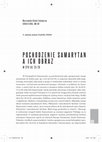
Warszawskie Studia Teologiczne 28/1 (2015) 168-187.
In the short text of Sirach 50:25-26, the Jewish writer adopts a negative stance on three foreign... more In the short text of Sirach 50:25-26, the Jewish writer adopts a negative stance on three foreign neighbors: Edomites, Philistines, and Samaritans. One might wonder why it is the Samaritans that are judged most severely. Hence, the following presentation first discusses the history and identity of the Samaritans on the basis of biblical sources, Jewish extra-biblical writings (e.g. Joseph Flavius, Rabbinic texts), Samaritan traditions. The exegetical analysis of Sirach 50:25-26 in its literary and historical contexts reveals a difference in the attitude towards the Samaritans between Hebrew and Greek versions of the Book of Ben Sira. The author of the Hebrew text disapproved of the Samaritans at both political and religious levels. The translator of the Greek version expressed his resentment towards two separate Samaritan groups: governing the district of Samaria and leading the worship of YHWH on Mount Gerizim.
The Biblical Annals 4 (2014) 313-329.
The interpretation of the biblical books started already in the Bible itself, in which one can ea... more The interpretation of the biblical books started already in the Bible itself, in which one can easily notice the plethora of quotations, allusions to, and echoes of other biblical texts. This study analyzes the quotation of Isaiah 49:16a found in the apocryphal Syriac Apocalypse of Baruch. By analyzing the immediate context of this verse in the Book of Isaiah, its form, and historical background, the meaning of the text within its original context is revealed. Then a similar analysis applies to the form and the historical context of this verse within its new context, namely in 2 Baruch 4:2. The confrontation yields a significant number of possible interpretations and applications of this Isaianic text within its new context.
Studia Loviciensia 16 (2014) 19-34.
Powołanie w Biblii to spotkanie z Bogiem, doświadczenie Jego Osoby, usłyszenie Jego wezwania i Je... more Powołanie w Biblii to spotkanie z Bogiem, doświadczenie Jego Osoby, usłyszenie Jego wezwania i Jego wyboru 1 . Stąd pierwsze powołanie to stworzenie, wezwanie do życia, kiedy to Bóg swoim słowem wywołuje człowieka z niebytu, obdarowuje istnieniem. Biblia ukazuje nam drogę upadłej ludzkości w kierunku zbawienia. Na tej drodze Bóg powołuje. To powołanie ciągle wiąże się ze słuchaniem Jego głosu i Jego słowa 2 . Jednocześnie dochodzi do nawiązania relacji Bóg -człowiek. Powołanie, to bliska, świadoma więź z Bogiem, ale jednocześnie ukierunkowanie na jakieś szczególne zadanie czy funkcję. Choć te biblijne wzorce są w pewnej mierze podobne, to jednak każdy posiada swoją własną specyfikę i niepowtarzalność 3 . Zadanie, które wynika ze spotkania z Bogiem wyraża tajemnicę i dar osoby obdarowanej.
Warszawskie Studia Teologiczne 27/1 (2014) 109-117.
The Acts of the Apostles describe the life and mission of the first Christian community formed by... more The Acts of the Apostles describe the life and mission of the first Christian community formed by the Holy Spirit. The presence of the Holy Spirit is demonstrated by the lifestyle of the first believers of Christ. The author of the Acts demonstrates that the spiritual values find their expression in the practical decisions of daily life, which include the faithfulness to the apostolic teaching, the community of goods, the breaking of bread, and prayer. The most practical element of Christian lifestyle, which is the community of goods, understood as the mutual care for the needs of the members of the community is not only a sign of pure charity but also the expression of spiritual unity with Christ and among his disciples.





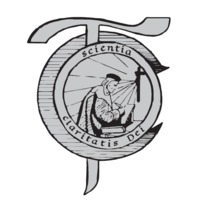


Uploads
Books by Judyta Pudełko
Articles by Judyta Pudełko
a radical renewal of Israel. The exegetical analysis of the prophet’s individual tasks allows him to be identified with various heroes of the biblical story (David, the Messiah, the Servant of the Lord). At the same time, these activities were most often attributed to God Himself. The eschatological renewal of Israel, which God will accomplish, will also extend to other nations.
their image in an ambivalent way. The woman is perceived as good or bad according to the assessment given to her by a man. Those opinions, expressed in an emotional
way, raise a question of their legitimacy and of the real image of a woman in the book. The analysis of several metaphors in the negative (Sir 15:1–2; 26:16–18; 36:24–25) and positive (Sri 15:1–2; 26:16–18; 36:24–25) statements by Sirach in the context of other texts by the wise man makes it possible to understand their meaning. While instructing his listeners, Sirach offers strong opinions both on men and women, even though the texts criticizing male vices are much more numerous. When we read the texts by the wise man from such a perspective, an inclination to misogyny is hard to trace. The emotional tension present in the texts about women signifies their great value as well as their influence and effect on men’s lives.
a radical renewal of Israel. The exegetical analysis of the prophet’s individual tasks allows him to be identified with various heroes of the biblical story (David, the Messiah, the Servant of the Lord). At the same time, these activities were most often attributed to God Himself. The eschatological renewal of Israel, which God will accomplish, will also extend to other nations.
their image in an ambivalent way. The woman is perceived as good or bad according to the assessment given to her by a man. Those opinions, expressed in an emotional
way, raise a question of their legitimacy and of the real image of a woman in the book. The analysis of several metaphors in the negative (Sir 15:1–2; 26:16–18; 36:24–25) and positive (Sri 15:1–2; 26:16–18; 36:24–25) statements by Sirach in the context of other texts by the wise man makes it possible to understand their meaning. While instructing his listeners, Sirach offers strong opinions both on men and women, even though the texts criticizing male vices are much more numerous. When we read the texts by the wise man from such a perspective, an inclination to misogyny is hard to trace. The emotional tension present in the texts about women signifies their great value as well as their influence and effect on men’s lives.